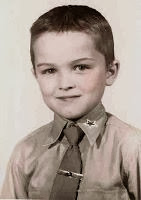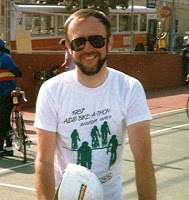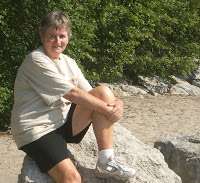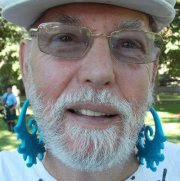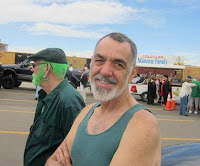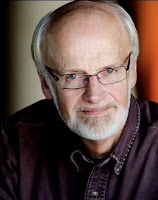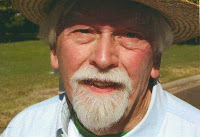Speaking generally, Eisenhower, Bradley, Patton, Marshall, DeGaul, Montgomery, Julius, and I don’t cook; I mostly eat things cooked by others.
I do make a wonderful meatloaf. That is, occasionally it is wonderful. My meatloaf really was wonderful, once. I could never duplicate the recipe as there really wasn’t one; only general guidelines with one secret ingredient. I make it just like my mother did. When she added the spices and “fillers,” she added a little of this and some of that, of whichever spices and fillers were actually on hand in the cupboard.
For one year, I was a “house-husband” in Florida while Deborah, my wife, worked. My children and I ate lots of fried ground hamburger mixed with eggs and corn or peas. I was okay, but the kids grew very tired of it rather quickly. I varied the meals with spaghetti to avoid making excessively boring meals. Of course, I also did my meatloaf with vegetables. The meals must have turned out okay because the kids grew and no one got sick or died.
Earlier this year, I made a lemon-meringue pie from scratch, except for the store-bought crust. I followed a recipe from a cookbook and it came out picture-and-taste perfect.
Years ago, while in the Boy Scouts, I learned to cook enough to pass my Tenderfoot badge requirements. After just one campout trying to cook on a fire using the aluminum mess kit, I decided there must a better way!
The annoying problem with cooking with a mess kit is the cleanup afterwards. I followed the recommendation of the Scout Handbook and coated the bottom of my kit with rubbings from a bar of soap to make the removal of soot easier. I don’t believe it helped at all but if it did, I would hate to clean one that had no soap applied in advance.
After that experience, I discovered aluminum foil cooking. So from then on, I wrapped cut carrots, potatoes, and a hamburger patty in foil and placed it on hot coals until done. I made the meals at home and carried them to the campsite for cooking. No fuss. No cleanup mess. I was back to all the fun stuff in minimal time.
Within a year, I was the Senior Patrol Leader and the oldest boy in the troop. At that point, the Scoutmaster, his assistant, and the occasional father would not only cook for themselves but also for me. I was in scout hog-heaven.
The recent movie, Moonrise Kingdom with its reference to Khaki Scouts makes me nostalgic for those halcyon days of Boy Scouting in my youth – full of energy, no significant cares, out in the fresh-air, having fun, learning or honing new skills, challenging activities, minor cuts & scrapes, meals flavored with nature’s “trail-seasonings,” competitions with other troops, campfire sing-a-longs with ghost-stories or perhaps other stories even some you wouldn’t want your mother to hear about, and probably knowing that the younger scouts looked-up to me as if I were their “nice” older brother.
My heart and head long for those days to become real again, so the memories of them are truly precious to me representing, as they do, the happiest times of my youth.
© 19 November 2012
About the Author
I was born in June of 1948 in Los Angeles, living first in Lawndale and then in Redondo Beach. Just prior to turning 8 years old in 1956, I began living with my grandparents on their farm in Isanti County, Minnesota for two years during which time my parents divorced.
When united with my mother and stepfather two years later in 1958, I lived first at Emerald Bay and then at South Lake Tahoe, California, graduating from South Tahoe High School in 1966. After three tours of duty with the Air Force, I moved to Denver, Colorado where I lived with my wife and four children until her passing away from complications of breast cancer four days after the 9-11 terrorist attack.
I came out as a gay man in the summer of 2010. I find writing these memories to be therapeutic.
My story blog is TheTahoeBoy.Blogspot.com
